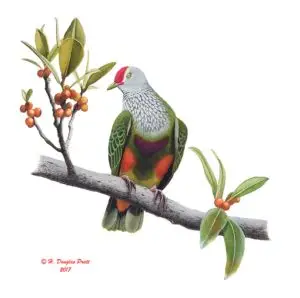
Mariana Fruit Dove
The totot lives in the limestone forest and in secondary growth canopies. They feed on fruit, largely papaya, figs and inkberry.

The totot lives in the limestone forest and in secondary growth canopies. They feed on fruit, largely papaya, figs and inkberry.
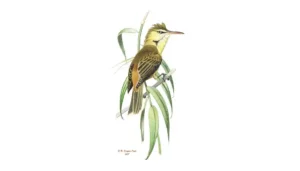
The Gå’ga’ Karisu’s name means dweller among the reeds. It lives in tangantangan thickets, limestone forest edges, marshes and freshwater wetlands, especially in tall reeds.
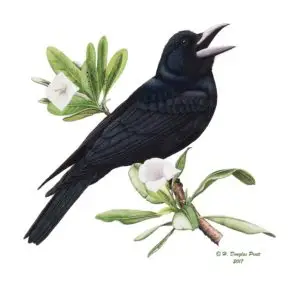
It lives in a variety of habitats preferring limestone forest but also strand and ravine forests and agricultural areas. It is omnivorous, feeding on a
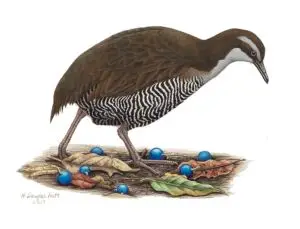
The Ko’ko’ is a large rail, standing 11 to 12 inches or about 28 centimeters tall. It lived in secondary forested areas mixed with grasslands
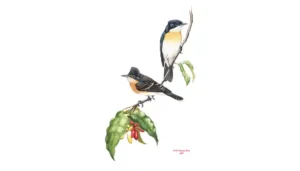
The Guam flycatcher was secretive. It lived in limestone and ravine forests, mangroves and tangantangan thickets.

Nosa’ live in native limestone and ravine forest trees as well as tangantangan thickets. Nests are placed high in the tree canopy and are made
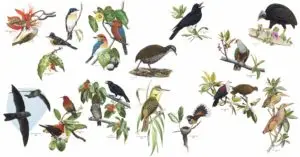
The limestone and ravine forests of Guam have historically supported 14 species of terrestrial birds. Two of these 14 birds are endemic to Guam at
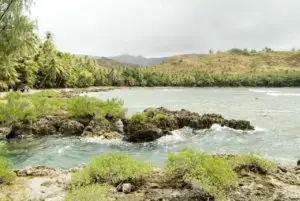
At 13 degrees north latitude and 144 degrees east longitude, the island of Guam is the largest in size (214 square miles), the most populated,
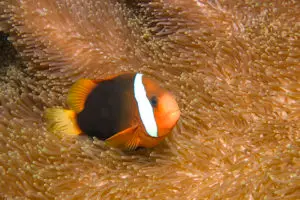
Marine fishes fulfill several important functions for Guam. Traditionally, fishing on coral reefs has been an important part of local CHamoru culture, and fish were

Green sea turtles were once a common species of sea turtles found in Guam’s waters. They can still be seen around the island where rich